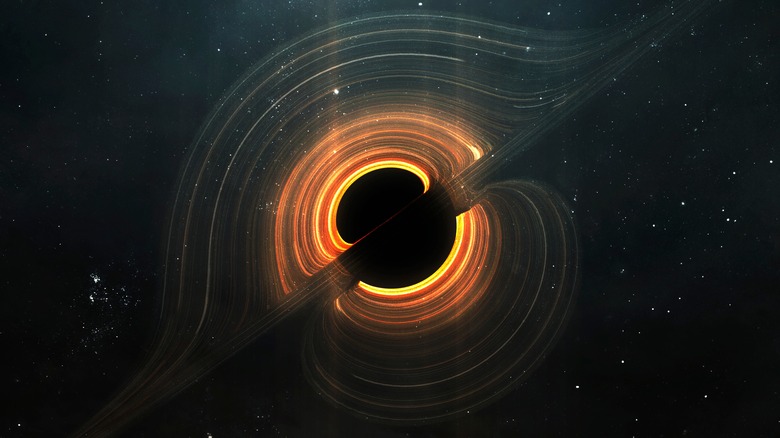What Really Happens At The Edge Of The Universe?
The flat Earth conspiracy may not hold all that much water, but the universe might indeed be a lot flatter than you think. The idea of a geometrically flat, infinite universe is backed by Einstein's theory of general relativity, which denotes that the speed of light is constant no matter how warped spacetime becomes due to the gravitational pull of objects like stars or black holes. It also makes the most sense, since the total quantity of "universe" in existence is defined by an event horizon — a boundary through which no light can escape — that is constantly expanding in all directions at a speed that is notably faster than the speed of light (via Explaining Science).
According to a blog post by Dr. Christopher S. Baird of West Texas A&M University, what we can actually observe is also steadily increasing, albeit at the speed of light, which is finite by comparison to the speed at which the aforementioned cosmic event horizon is expanding. Space notes that the speed of light is 983,571,056 feet per second. If this all sounds confusing, that's because the observable universe (with a radius of roughly 45 billion light-years) is expanding at a different speed than the universe itself, which scientists are still working on quantifying or conceptualizing as a geometric entity. The edge of the universe is defined by something called a "particle horizon," which is similar to the event horizon of a black hole, albeit inverted. But it's important to understand that the "edge" of the universe doesn't exist in the way that you might think it does.
The universe doesn't really have an edge
You may be thinking about the "edge" of the universe as a point at which you could turn around and see a zoomed-out view of everything — every galaxy, every planet, every star, and so forth. But this probably isn't the right way to approach this concept, at least not according to Space, which explains that even if you were to catch up with the edge, there would simply just be more universe. The theory suggests this is not necessarily a problem that can be solved by imagining the entirety of the universe as some form of object or point of observation; it simply is.
But let's instead say that you could somehow step outside of the universe and hold the entirety of its contents in your hand. What you'd probably have is a sphere-shaped object that stays the same size in your hands while the contents inside shift around, but since the universe is self-contained (not unlike a video game world) we could never truly become aware of an outside, at least not without interdimensional travel.
Moreover, as the universe expands (which again, happens faster than the speed of light), so do the distances between objects in space. Entire galaxies may be traveling away from our own point in spacetime at speeds that are also faster than the speed of light. So, the pertinent question may not actually be "what really happens at the edge of the universe?", but rather "what's beyond our observable universe?" — which is, as astrophysicists at the University of Lyon theorized in 2021, just more universe.

